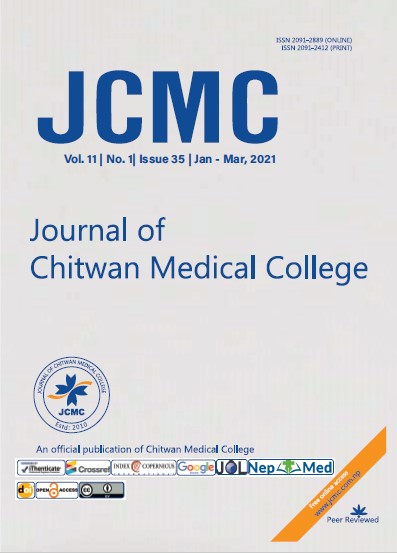Amnion graft vaginoplasty in vaginal agenesis
Keywords:
Amnion; Vaginal agenesis; Vaginoplasty.Abstract
Vaginal agenesis seen in Mayer-Rokitansky-Kuster-Hauser (MRKH) syndrome is a condition with significant psychological and social consequences where there is embryonic underdevelopment of müllerian duct. It is estimated to occur one in 4000 to 5000 live births. Normalizing sexual life with vaginal reconstruction to adequate length is usually the treatment of choice. Among many non-surgical and surgical options available, McIndoe vaginoplasty is the commonest surgical management performed worldwide with various modifications, like the use of amnion as a graft. A 19-year-old girl with normal secondary sexual characters came with vaginal agenesis with hypoplastic uterus. MRI revealed streak like structure over the pelvis with imperforate hymen and atresia of the vagina. Surgical intervention included creation of vaginal canal from a potential space between urethra and bladder above and rectum below and a fresh amnion mounted mould was placed within the canal. The amnion graft was seen well taken with resultant 4 to 5 cm of vaginal canal when mould was removed 10 days later. She was counselled and taught to remove and insert the mould to prevent vaginal narrowing and maintain the length. Amnion graft vaginoplasty has with good success rate with minimal postoperative pain, infection and scarring and thus is a rewarding procedure especially in low resource countries.




